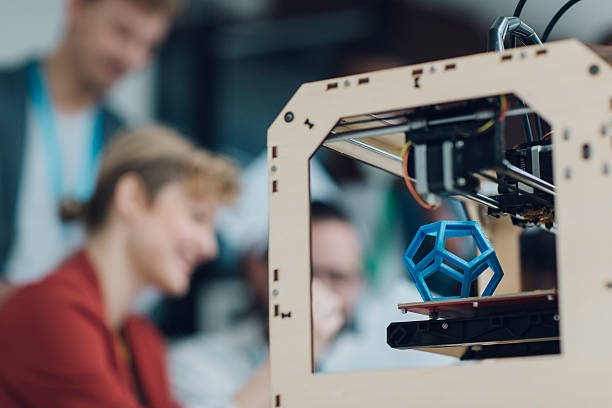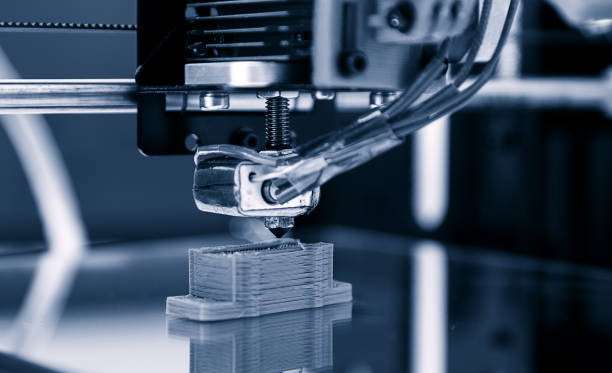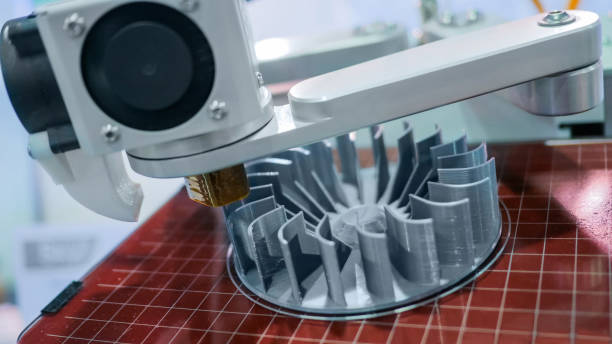Is it safe to 3d print indoors
3D printing has become increasingly popular in recent years, with more and more people exploring its potential for creative and practical purposes. But as the technology becomes more accessible and affordable, concerns have been raised about its safety, particularly when it comes to indoor use.

While 3D printing has many benefits, there are also some risks associated with the process. These include exposure to potentially harmful fumes and particles, as well as fire hazards. As such, it is important to understand the safety considerations involved in 3D printing before bringing this technology into your home or workplace.
In this article, we will explore the safety implications of 3D printing indoors, including potential health risks and safety guidelines to follow. By understanding the risks involved and taking appropriate precautions, you can enjoy the benefits of this exciting technology while minimizing the potential hazards.
Materials Used by 3D Printer
3D printing is a revolutionary process that has opened up new possibilities for creating complex objects. To make 3D printed objects, a material must be used that can be solidified layer by layer in the desired shape. The most common materials used for 3D printing are thermoplastics, metals, and ceramics. Thermoplastics are lightweight and low-cost, making them ideal for producing consumer goods.
Metals like stainless steel, aluminum alloys, and titanium offer superior strength and durability, perfect for applications requiring high-performance parts. Ceramics are brittle but have excellent thermal and electrical insulation properties, which makes them suitable for various industrial components. With advances in 3D printing technology, more specialized materials such as biodegradable polymers and conductive polymers are becoming available as well.
ABS Filament
ABS filament is a thermoplastic material commonly used in 3D printing. It is lightweight and has excellent strength and durability, making it perfect for consumer goods and industrial components. ABS filament is also well-suited for complex objects due to its high melting temperature, which allows for greater detail in prints. Additionally, ABS filament is relatively inexpensive compared to other materials used in 3D printing.
Due to its durable nature, ABS filament can be used both indoors and outdoors without degrading over time. However, when 3D printing with ABS filament indoors, it’s important to ensure proper ventilation since the material releases fumes that can be hazardous if breathed in. It’s best to print with ABS filament in well-ventilated areas or use a fume extractor to keep the air free from potential toxins. By following these safety precautions, you can safely enjoy the high-performance results of 3D printing with ABS filament indoors.
PLA Filament
PLA filament is a biodegradable thermoplastic material made from renewable resources such as corn starch, sugar cane, and tapioca root. It has great strength and durability, making it ideal for consumer goods and industrial components. Additionally, PLA filament is relatively inexpensive compared to other 3D printing materials.
Unlike ABS filament, PLA does not release hazardous fumes when used indoors. In fact, it’s considered one of the safest filaments to use in enclosed spaces since it emits a sweet aroma during printing. This makes PLA filament perfect for 3D printing indoors without fear of inhaling potentially toxic fumes or particles.
Moreover, PLA filament is much easier to work with than other materials due to its low melting point which allows for greater detail in prints. Additionally, its low shrinkage rate makes it great for large objects that require precise details without warping or shrinking during cooling down. With all these advantages combined, PLA filament is an excellent choice for safe indoor 3D printing projects.
Resin-Based Materials
Resin-based materials are a type of 3D printing filament used for intricate, detailed prints. Unlike PLA or ABS filaments, resin-based materials require the use of a special printer and require a curing process with ultraviolet light. This type of material is great for creating highly detailed objects with smooth surfaces that cannot be achieved with other filaments.

While it is generally considered safe to print with resin-based materials indoors, some safety measures should be taken in order to minimize potential health risks. The curing process produces fumes that can be hazardous if inhaled over long periods of time. It’s important to make sure the area where you’re 3D printing is well ventilated and avoid breathing in any fumes produced by the machine. Additionally, wearing gloves and protective eyewear can help reduce your exposure to potentially harmful chemicals during the printing process.
Overall, resin-based materials offer superior detail and quality compared to other filaments making them perfect for complex designs that cannot be achieved using other 3D printing techniques. With proper safety precautions it is safe to print using this material indoors, allowing you to create amazing projects without worry about toxic fumes or particles.
Health Risks Associated with Indoor 3D Printing Air Pollution from Toxic Fumes and Particles Emitted During the Printing Process Sweet Smell from Organic Compounds in the Plastic Filaments Used for Printing Volatile Compounds Released Into the Air from the Heating Nozzle Temperatures Ultrafine Particles Generated During the 3D Printing Process
Health risks associated with indoor 3D printing are a growing concern, as the process of melting and forming plastic filaments releases toxic fumes and particles into the air. The sweet smell emitted from these organic compounds can be hazardous to breathe in over long periods of time, and volatile compounds released from the heating nozzle temperatures can also pose a risk to health. In addition, ultrafine particles generated during the 3D printing process may be small enough to enter our lungs, which can cause respiratory problems.
To minimize any potential health risks, it is important to make sure your 3D printing area is well ventilated and that you avoid breathing in any fumes produced by the machine. Additionally, wearing gloves and protective eyewear will help reduce your exposure to potentially harmful chemicals during the printing process. Finally, it is recommended that you invest in a high-quality air purification system if you plan on doing a lot of indoor 3D printing.
Precautionary Measures to Minimize Health Risks when Using a 3D Printer Indoors Proper Ventilation in the Room to Reduce Levels of Toxic Fumes and Air Pollution Keeping Windows Open or Investing in an Exhaust Fan to Improve Indoor Air Quality Avoid Prolonged Exposure to Any Type of Fumes Generated by a 3D Printer Wearing Face Masks or Respirators When Operating a 3D Printer Indoors
Precautionary measures to minimize health risks when using a 3D printer indoors include proper ventilation in the room to reduce levels of toxic fumes and air pollution. Keeping windows open or investing in an exhaust fan to improve indoor air quality is recommended, as well as avoiding prolonged exposure to any type of fumes generated by a 3D printer.
It is also important to wear face masks or respirators when operating a 3D printer indoors. Taking such measures can help protect your health from potential harm caused by the 3D printing process. Additionally, it is best practice to regularly clean and maintain the machine for optimal performance and safety. By following these precautionary steps, you can continue safely enjoying the benefits of 3D printing indoors.

Conclusion
In conclusion, 3D printing indoors is generally safe to do as long as you take proper safety precautions. It is important to ensure proper ventilation and air quality in the room where the 3D printer will be used by keeping windows open or investing in an exhaust fan.
Additionally, it is important to avoid prolonged exposure to any type of fumes generated by a 3D printer and wear face masks or respirators while operating the machine. Lastly, always regularly clean and maintain your 3D printer for optimal performance and safety. By following these precautionary steps, you can continue safely enjoying the benefits of 3D printing from the comfort of your own home.